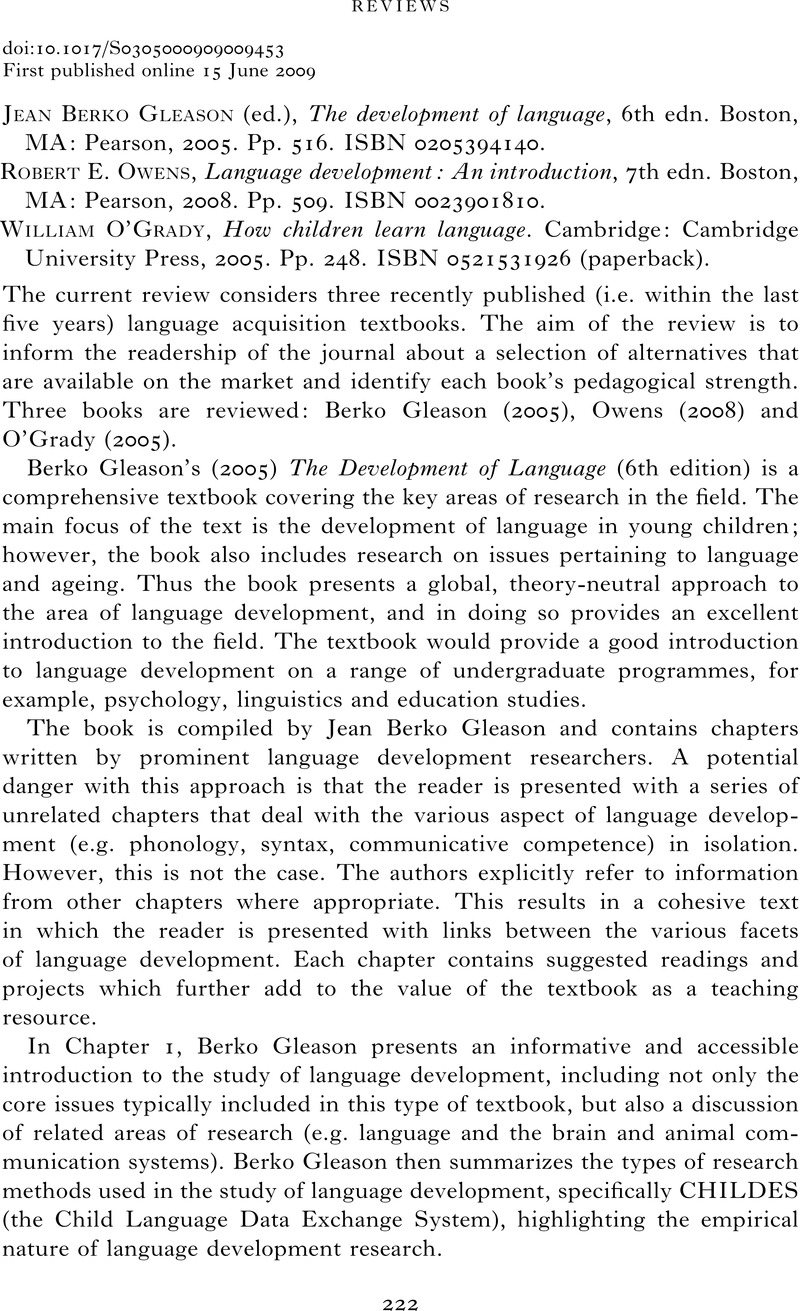No CrossRef data available.
Article contents
Jean Berko Gleason (ed.), The development of language, 6th edn. Boston, MA: Pearson, 2005. Pp. 516. ISBN 0205394140. - Robert E. Owens, Language development: An introduction, 7th edn. Boston, MA: Pearson, 2008. Pp. 509. ISBN 0023901810. - William O'Grady, How children learn language. Cambridge: Cambridge University Press, 2005. Pp. 248. ISBN 0521531926 (paperback).
Published online by Cambridge University Press: 15 June 2009
Abstract
An abstract is not available for this content so a preview has been provided. Please use the Get access link above for information on how to access this content.

- Type
- Reviews
- Information
- Copyright
- Copyright © 2009 Cambridge University Press
References
REFERENCES
Croft, W. (2001). Radical Construction Grammar: Syntactic theory in typological perspective. Oxford: Oxford University Press.Google Scholar
Goldberg, A. (1995). Constructions: A Construction Grammar approach to argument structure. Chicago: Chicago University Press.Google Scholar
Langacker, R. W. (1987). Foundations of Cognitive Grammar, vol. 1: Theoretical prerequisites. Stanford: Stanford University Press.Google Scholar
Langacker, R. W. (1991). Foundations of Cognitive Grammar, vol. 2: Descriptive application. Stanford: Stanford University Press.Google Scholar
Lieven, E., Behrens, H., Spears, J. & Tomasello, M. (2003). Early syntactic creativity: A usage-based approach. Journal of Child Language 30, 333–70.CrossRefGoogle ScholarPubMed
Ninio, A. (1995). Expression of communicative intents in the single word period and the vocabulary spurt. In Nelson, K. E. & Reger, Z. (eds), Children's language, Vol. 8, 103–124. Mahwah, NJ: Erlbaum.Google Scholar
Ninio, A., Snow, C. E., Pan, B. A. & Rollins, P. (1994). Classifying communicative acts in children's interactions. Journal of Communicative Disorders 27, 157–88.CrossRefGoogle ScholarPubMed
Rowland, C. F. & Pine, J. (2000). Subject–auxiliary inversion errors and wh-question acquisition: ‘What children do know?’ Journal of Child Language 27, 157–82.CrossRefGoogle ScholarPubMed
Snow, C. E., Pan, B., Imbens-Bailey, A. & Herman, J. (1996). Learning how to say what one means: A longitudinal study of children's speech act use. Social Development 5, 56–84.Google Scholar
Tomasello, M. (2002). Do young children have adult syntactic competence? Cognition 74, 209–253.Google Scholar




